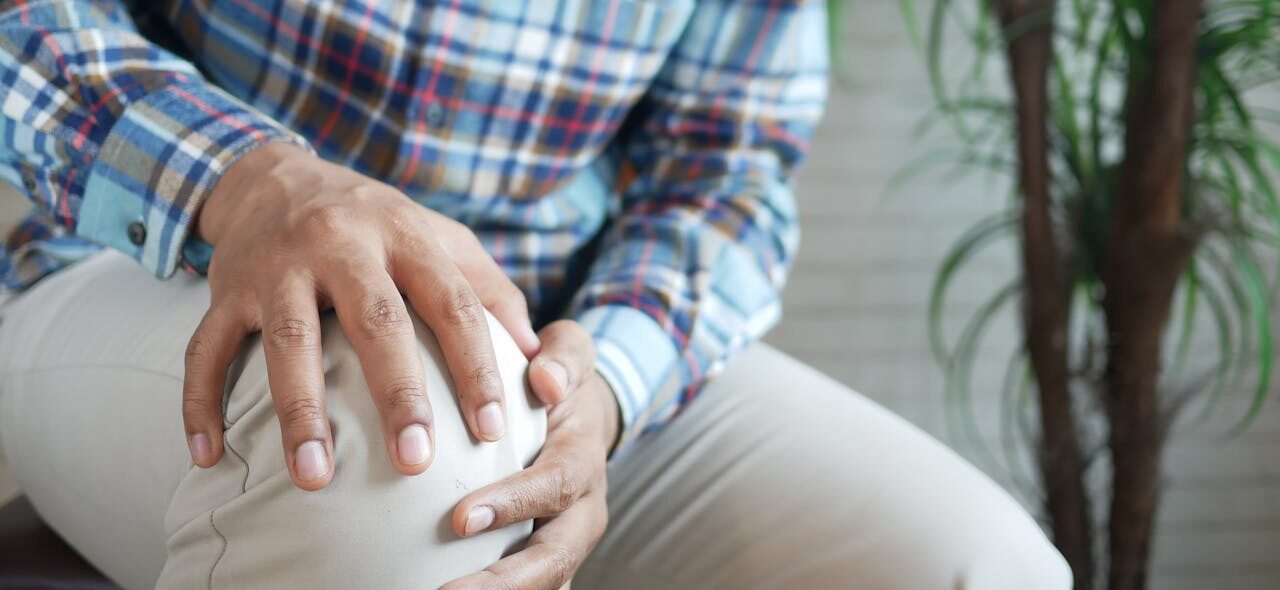
Crepitus
By Ann Constantino,
Photo by Towfiqu barbhuiya.
The word crepitus comes from the Latin for “creak” and shares its root with the word “decrepit”. Its modern medical usage is an umbrella term for the various sounds made by a moving joint, which can also be described as clicking, popping, crunching, grinding, or grating. Crepitus can be a minor, harmless annoyance or a sign of damage worthy of being checked out by your provider.
Harmless forms of crepitus
Knuckle-cracking fiends will be happy to know that the crepitus produced by the habit they enjoy (and that they love to torture others with) is the harmless kind. In fact, it is fake news that knuckle-cracking causes arthritis. Knuckle-cracking produces a sound caused by tiny gas bubbles popping when the finger joints are stretched. The joints contain a kind of biological 30-weight called synovial fluid. This liquid acts as a lubricant and friction reducer in many joints of the body. It contains compressed gases, and when stretched or manipulated, causes those gases to create bubbles. The knuckle-cracking sound is the popping of those bubbles.
This same phenomenon can occur in other joints, such as the knee, shoulder, elbow, wrist, and even the spine, and as long as the sound effects are not accompanied by pain, swelling, or instability, they are usually harmless.
Minor wear and tear due to aging can increase the noise in the joints.
Other harmless forms of crepitus include the snapping of connective tissues like tendons and ligaments as they slide over a bony surface during articulation. Ligaments are made of tough fibrous tissue and link bone to bone, acting as a stabilizer in joint movement. Tendons are the strong, ropy structures at the ends of a muscle group that attach muscle to bone.
Minor wear and tear due to aging can also increase the noise in the joints as friction increases. Cartilage is tough, shock-absorbing tissue that covers the surfaces of bones and enables them to articulate with each other smoothly. A certain amount of noisy but painless crepitus arises when cartilage begins to wear down.
Cause for concern
When should you be concerned with the percussion section in your joints? Known as pathological crepitus, when the sounds are accompanied by pain, swelling, decreased range of motion, or noticeable instability, crepitus might be a warning sign of a more serious underlying condition.
Osteoarthritis, usually shortened to “arthritis,” is a painful disease of the joints that affects 30 percent of Americans aged 45-64 and upwards of 50 percent of those over 65. When crepitus becomes pathological, it is most often because of arthritis.
While wear and tear due to lifestyle choices, such as running on hard surfaces or work demands such as repetitive heavy lifting without sufficient recovery, can lead to arthritis, there are other causes that exacerbate the symptoms of inflammation in the joint. Systemic inflammation can worsen arthritis and can be caused by consumption of highly processed foods, smoking, overindulgence in alcohol, and psychological stress. Nicotine limits blood flow to the joints, and alcohol depletes nutrients.
Reducing systemic inflammation by making healthier food choices can help.
Reducing systemic inflammation by making healthier food choices and including Omega-3 fatty acids, such as those in cold water fatty fish, can help. Antioxidants such as vitamins C and E can work to limit oxidative stress that causes cartilage to deteriorate. There is also growing evidence that resistance training targeting the muscle groups around the diseased joint can provide support to the joint that reduces pain.
Rheumatoid arthritis is a chronic autoimmune disorder that causes the body’s immune system to attack and degrade the tissue surrounding the joints. Stubborn crepitus accompanied by pain may be a sign of this debilitating disease.
Crepitus may also be present in tendonitis, a condition that occurs when there is injury to or inflammation of the connective tissue that links muscle to bone. Tendons can be very slow to heal due to their lack of blood vessels, so it’s important to seek a diagnosis early when experiencing symptoms of tendonitis. Crepitus may be present and other symptoms may include a dull ache, or sometimes a burning sensation around the affected muscle and nearby joints. If left untreated, movement will cause worsening pain and swelling or discoloration around the site of the injured tendon may follow.
Patello-femoral pain syndrome (misalignment of the kneecap), bursitis (inflammation of fluid sacks that cushion bones, tendons, and muscles to allow smoother joint movement), and injury can also produce crepitus.
When to see a doctor
A sign that a visit to your provider is in order, regardless of your age, is morning stiffness that doesn’t go away with movement and might be accompanied by pain in the knees, back, or other joints. Because both overuse and underuse can contribute to joint issues, it can be a tough call to know when to get help. The sounds of crepitus may be talking to you, suggesting that sooner, rather than later is the time to see your provider.
Ann Constantino, submitted on behalf of the SoHum Health’s Outreach department.